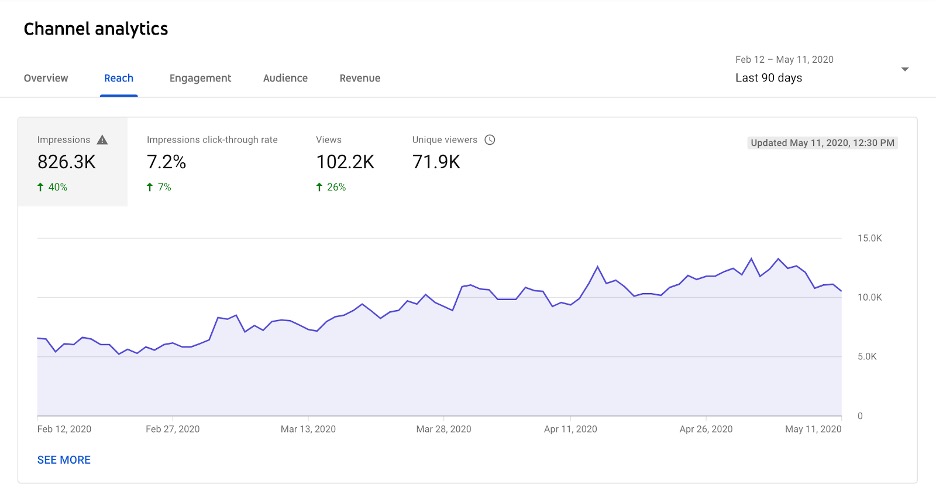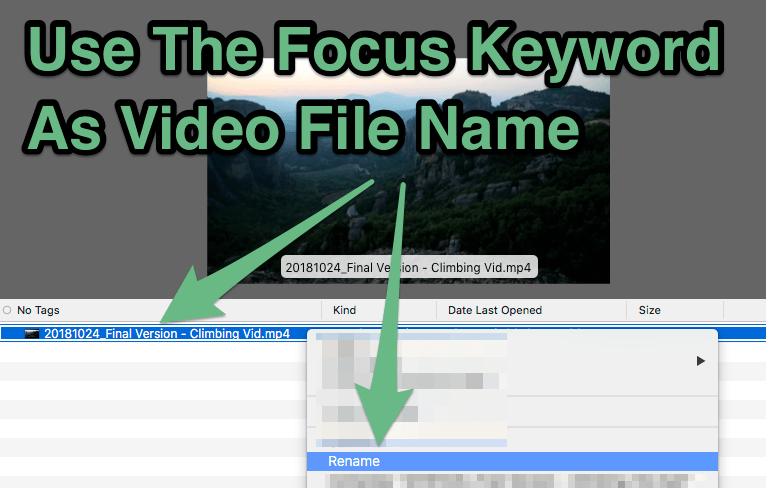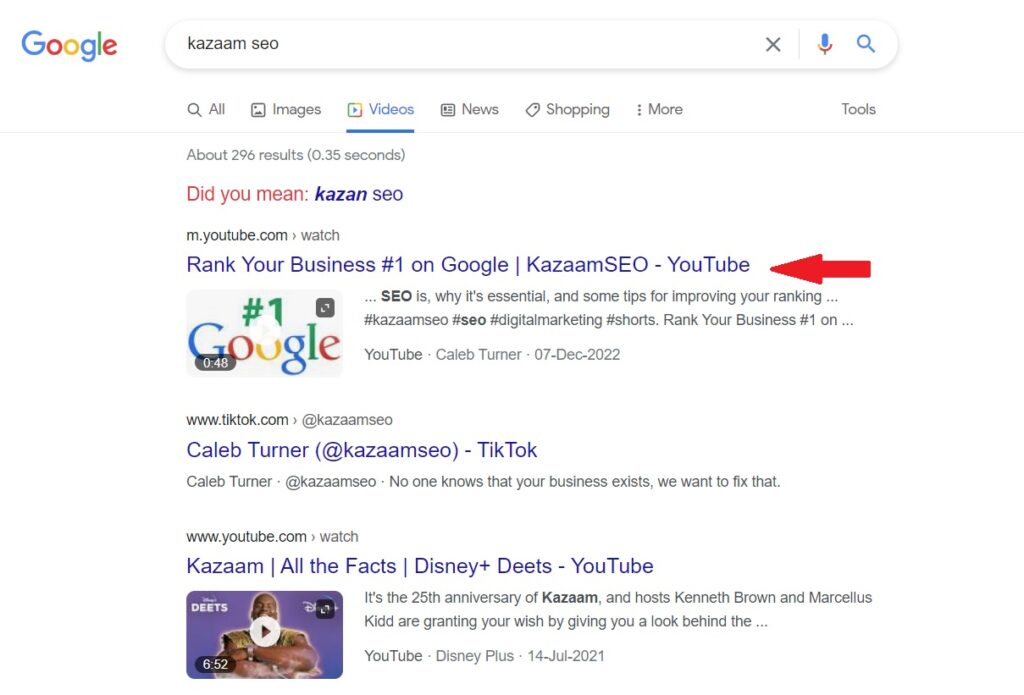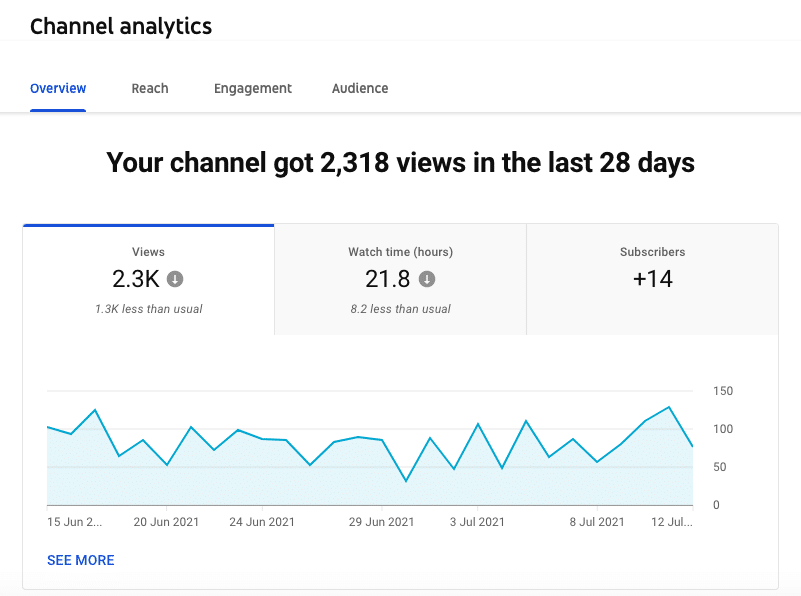To achieve success on YouTube, you need a well-defined strategy that encompasses two essential components. First, you must gain a deep understanding of how YouTube SEO operates. Armed with this knowledge, you can then embark on a journey to identify your target audience, formulate a channel plan, and set ambitious growth objectives.
Demystifying YouTube SEO

YouTube, a subsidiary of Google, employs a search algorithm that shares common traits with its parent company. This algorithm works to present users with videos that best match their search queries, making it vital for content creators to grasp the intricate workings of YouTube SEO. Several factors influence the ranking of a video for specific search terms.
These include the video title, description, metadata, the number of views, comments, and likes, as well as the watch time. The algorithm also takes into account the user’s past activities, ensuring that search results cater to individual preferences. In unison, these signals provide the algorithm with insights into the relevance, popularity, and engagement level of a video concerning a user’s search query.
Choose Your Target Audience with Precision

For many content creators, audience growth commences with selecting a topic and subsequently optimizing their YouTube videos. However, as your channel expands, so does the competition. Gone are the days when one could establish a YouTube channel around broad subjects like product reviews or technology. Contemporary YouTube channels thrive on a more specialized focus.
When narrowing down your target audience, you must meticulously deliberate on who you intend to engage through your channel and the rationale behind it. Pose questions such as: How well-acquainted are you with your target audience? Why do they spend their time on YouTube? Which other social media platforms do they favor? What stokes their curiosity and loyalty? Are there fellow YouTube channels or creators you should join forces with to establish a connection with this audience?
Develop a Comprehensive Plan
While devising a content plan may seem straightforward for channels centered around a beloved topic, challenges often lie not in idea generation but in execution. Optimizing YouTube for SEO requires going beyond the selection of video topics and posting schedules. It necessitates a strategic approach that identifies the resources required to enhance traffic, conversion, and engagement with your video content.
For instance, a brilliant idea for a video might hit you, but where will you acquire the footage? If you’re not shooting your content or obtaining it from your local community, you might struggle to find high-quality source material for your videos.
Enhancing your video quality may also demand acquiring professional skills or forming a team proficient in editing, sound, and animation. Yet, if such resources aren’t readily available to you, you should devise a plan to craft remarkable videos nonetheless. Competitive analysis is yet another valuable tool for your planning toolkit. It aids in determining optimal video length and the most strategic platforms for video promotion on social media.
Setting Growth Targets

YouTube provides an array of helpful metrics that allow you to assess the extent to which your team is accomplishing its strategic goals. While broad metrics are helpful for tracking consistency and major shifts in performance, it is equally important to select specific metrics that align with your objectives. For instance, if you aim to expand your audience, it is imperative to monitor metrics such as subscriber count, impressions, and audience retention. Should your primary goal be to boost engagement, keep an eye on metrics like likes, comments, shares, and watch time.
If you aim to drive web traffic, incorporate links in your video descriptions and annotations, and track the sources of incoming traffic on your website. Regularly scrutinizing metrics that align with your objectives will offer invaluable insights into audience growth and enable you to fine-tune your video content and SEO strategies, paving the way for the continued expansion of your YouTube channel.
The Art and Science of YouTube SEO
Optimizing your YouTube videos for SEO requires a multifaceted approach, one that incorporates both art and science. Here are some key techniques to master:
Keyword Optimization
Renaming your video file using a target keyword, naturally incorporating the keyword into the video title, optimizing the video description, and tagging your video with relevant keywords are fundamental practices.

Categorization
Properly categorizing your video enhances its visibility.
Custom Thumbnails
Uploading a custom thumbnail image for your video’s result link can significantly impact click-through rates.
Subtitles and Closed Captions
The addition of SRT files for subtitles and closed captions can broaden your video’s accessibility and appeal.
Interactive Elements
Incorporate Cards and End Screens to keep viewers engaged and encourage them to explore your channel further.
Hashtags
The use of relevant hashtags can expand the reach of your video.
Playlists
Creating playlists centered around your video’s general topic fosters a cohesive viewer experience.
Video Length
Experimenting with video length can help you discover what works best for your audience.
Autocomplete
Leverage YouTube’s autocomplete feature to identify popular search queries and incorporate them into your video.
Timestamps
Using timestamps can enhance the user experience, making it easier for viewers to find specific content within your video.
Call to Action (CTA)
Encourage engagement and interaction by including a CTA in your video and video description.
Review and Adapt
Regularly review YouTube search analytics to gain insights into what’s working and what needs improvement.
By understanding and effectively implementing these SEO strategies, you can significantly boost the discoverability and performance of your YouTube videos.
Cracking the YouTube Algorithm: A 7-Step Guide
The YouTube search algorithm is the gatekeeper that decides which videos rise to the top and capture the attention of millions of viewers. To rank higher in YouTube search results and gain a competitive edge, you must follow a well-structured approach. Here’s a comprehensive 7-step guide to optimize your YouTube videos for greater visibility:
Step 1: YouTube Keyword Research
To begin your journey toward YouTube marketing success, you must target keywords with substantial search volume. Without this vital step, your videos are unlikely to attract significant search traffic. YouTube may not have an official keyword research tool, but there are several reliable methods to identify keywords with potential.
YouTube Suggest
Much like Google Suggest, YouTube Suggest provides you with a wealth of keyword suggestions. Simply type your seed keyword into the search bar, and you’ll instantly receive a list of related queries that contain your keywords. This feature is a goldmine for uncovering valuable long-tail keywords.
Google Trends
Google Trends is your ally in estimating keyword popularity. By entering YouTube’s suggested keywords, you can gain insights into their relative search volumes. Keep in mind that these estimates are approximate, but they offer valuable guidance.

Third-Party Tools
Tools such as Ahrefs’ Keywords Explorer can provide data on search volumes for keywords on YouTube. This tool offers search volumes, clicks data, global search volumes, and even country-specific search volumes. It’s a robust solution for thorough keyword research and optimization.
To succeed on YouTube, target keywords with search volume, but don’t fixate solely on search traffic. Remember that YouTube is a social platform, and not all video views originate from search. There are various strategies to explore trending topics, engage suggested views, and cater to your existing audience. By diversifying your content approach, you can maximize your reach and impact.
Step 2: Dive into Google’s Search Results
While YouTube is indeed the second largest search engine globally, you shouldn’t overlook the colossal reach of Google. Video content is increasingly prominent in Google’s search results. Therefore, it’s essential to cross-pollinate your video content across both platforms.
To gauge how much organic search traffic videos are receiving, follow these steps:
- Search Google for your target keyword and look for video carousels or dedicated video SERP features. Pay attention to video lengths and titles to understand what Google prefers to display.
- Use tools like Ahrefs’ Content Explorer to search for videos based on a specific topic. Utilize search operators to narrow down results and find videos that rank in Google. You can even explore the organic keywords for which these videos rank.
- Scrutinize Google’s search results and identify video URLs that rank highly. Copy these URLs and analyze them in Ahrefs’ Batch Analysis tool. Sort the results by “Traffic” to uncover video topics with the potential to attract more traffic from Google search.
- By integrating your video content with Google’s search results, you can tap into a broader audience and enhance your overall online presence.

Step 3: Leverage YouTube’s Autocomplete Feature
YouTube’s autocomplete feature is a treasure trove of insights into popular search queries. It’s a valuable tool for finding keywords and phrases that are actively searched by users. As you type your seed keyword, take note of the suggestions that appear. These are the queries that users are actively searching for. By incorporating these queries into your video content and optimizing around them, you can align your videos with the demands of your target audience.
Step 4: Utilize Timestamps
Timestamps are a simple yet effective technique to improve the user experience within your videos. They allow viewers to quickly navigate to specific sections of your content, making it easier for them to find the information they seek. When implementing timestamps, ensure that they correspond to relevant topics or key moments in your video. This not only benefits your audience but also enhances your video’s search optimization, as YouTube uses timestamps to gain a better understanding of your video’s content.
Step 5: Include a Call-to-Action (CTA)
Engagement is a vital metric for YouTube’s algorithm, and a well-placed call-to-action (CTA) can significantly impact your video’s performance. Encourage viewers to like, comment, share, and subscribe to your channel. It’s essential to guide your audience on how to interact with your content. Incorporate a CTA in your video and video description to prompt viewers to take specific actions. The more you engage your audience, the higher the likelihood of your videos gaining visibility and ranking higher.
Step 6: Review YouTube Search Analytics
Regularly review your YouTube search analytics to gain insights into the performance of your videos. Analyze metrics such as likes, dislikes, comments, click-through rate (CTR), audience retention, average watch time, end screen clicks, card clicks, and more. These metrics provide essential feedback on how well your videos are engaging viewers. The algorithm rewards videos that keep viewers on the platform for extended periods, so high engagement is critical.

Step 7: Consider Pinned Comments
Pinned comments are a simple yet effective way to encourage interaction and engagement with your video. By leaving a thoughtful and engaging comment pinned to the top of your video’s comments section, you can inspire viewers to participate in the discussion. Engaging with your audience in this manner not only fosters a sense of community but also contributes to higher engagement metrics, benefiting your video’s search ranking.
Conclusion
In conclusion, YouTube SEO is a multifaceted discipline that combines art and science to boost your videos’ visibility, engagement, and search ranking. By comprehensively researching and targeting keywords, understanding and aligning with Google’s search results, leveraging YouTube’s features, and consistently engaging your audience, you can position your videos for success in the highly competitive world of online video content. Mastering these strategies will enable you to tap into the immense potential of YouTube and cultivate a dedicated audience eager to engage with your content.
YouTube’s Algorithm and the Pursuit of Engagement
YouTube’s algorithm functions with the aim of retaining users on the platform for as long as possible. This goal is driven by the simple equation: more video views lead to more advertisements displayed, resulting in higher revenue for the platform. Therefore, YouTube has a vested interest in promoting content that keeps viewers engaged.
Effective video SEO isn’t solely dependent on the incorporation of keywords; it hinges on your ability to foster high engagement. Engagement can be measured through various metrics available in YouTube analytics, including likes, dislikes, comments, click-through rate (CTR), audience retention, average watch time, end screen clicks, card clicks, and more.
In essence, if you cannot captivate and engage your audience, your chances of ranking your YouTube videos for significant keywords are slim to none. By focusing on engagement and using these metrics as performance indicators, you can understand how you are expanding your audience and fine-tune your SEO and content strategies.
Unlocking YouTube’s Potential for Growth
By implementing a robust YouTube SEO strategy and consistently creating high-quality, engaging content, you can unlock the vast potential of YouTube for your brand or channel. As YouTube and Google continue to intertwine, with video content becoming increasingly prevalent in search results, your efforts to optimize for both platforms will yield even more significant results.
To recap, mastering YouTube SEO involves understanding and utilizing various elements, such as keywords, video optimization techniques, and user engagement. It’s a dynamic and multifaceted process that combines the science of keyword research with the art of crafting engaging, high-quality videos.
Remember, YouTube is more than just a platform; it’s a vibrant community where content creators and audiences come together. Your success on YouTube depends not only on your ability to rank in search results but also on your capacity to connect with viewers, inspire loyalty, and create meaningful interactions.
In the ever-evolving landscape of online video content, YouTube offers boundless opportunities for growth, creativity, and influence. By following the principles of effective YouTube SEO, you can tap into this potential, expand your reach, and achieve your goals, all while sharing your unique perspective and talents with the world.






